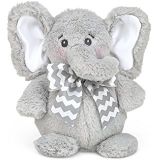Considerations for Choosing Tiny Plush Toys
2024-05-30
Tiny plush toys, also known as mini plush toys or miniature stuffed animals, are small-sized soft toys typically ranging from a few inches to a maximum of around six inches in height or length. Despite their small size, these adorable plush toys offer a lot of fun and play value. Here’s a detailed overview of tiny plush toys, including their types, uses, and considerations for choosing the right ones:
Types of Tiny Plush Toys
1. Animals:
- Miniature versions of various animals such as bears, dogs, cats, rabbits, pandas, and elephants.
2. Characters:
- Tiny plush toys featuring popular cartoon characters, superheroes, movie characters, and other fictional figures.
3. Food and Objects:
- Mini plush toys shaped like food items (e.g., fruits, desserts) or everyday objects (e.g., vehicles, household items).
4. Fantasy Creatures:
- Tiny plush toys inspired by mythical creatures such as unicorns, dragons, mermaids, and fairies.
5. Keychains and Charms:
- Plush toys designed with attachments like keychains or clips for hanging on bags, backpacks, or keyrings.
6. Seasonal and Holiday-Themed:
- Mini plush toys designed for specific seasons or holidays, such as Christmas, Halloween, Valentine's Day, or Easter.
7. Emoji and Emoticons:
- Small plush toys featuring popular emoji expressions or emoticons.
Uses of Tiny Plush Toys
1. Collectibles:
- Popular among collectors due to their cute and miniature designs, making them highly desirable as collectible items.
2. Decorative Accents:
- Used as decorative accents in homes, offices, or vehicles, adding a touch of whimsy and charm to the surroundings.
3. Gifts and Souvenirs:
- Given as gifts or souvenirs for various occasions such as birthdays, holidays, parties, or special events.
4. Party Favors:
- Distributed as party favors or prizes at children's parties, carnivals, festivals, or arcade game centers.
5. Educational Tools:
- Utilized in educational settings such as classrooms or daycare centers for teaching concepts like animals, colors, shapes, and emotions.
6. Stress Relief:
- Squeezable and soft, tiny plush toys can serve as stress relievers or comfort objects, providing a sense of relaxation and comfort.
Considerations for Choosing Tiny Plush Toys
1. Material Quality:
- Choose plush toys made from soft and durable materials for a pleasant tactile experience and longevity.
2. Safety:
- Ensure that the plush toys meet safety standards and are free from harmful substances, especially if intended for young children.
3. Size and Design:
- Consider the size and design of the plush toys, selecting ones that match the recipient's preferences or intended use.
4. Attachments:
- If purchasing plush toys with attachments like keychains or clips, ensure that they are securely attached and of good quality.
5. Cleaning and Maintenance:
- Check whether the plush toys are machine washable or easy to clean to maintain hygiene and freshness.
6. Purpose and Use:
- Determine the intended purpose and use of the plush toys to choose the most suitable types and designs.
7. Budget:
- Consider your budget and choose plush toys that offer the best value for money while meeting your requirements.
Conclusion
Tiny plush toys offer a delightful combination of cuteness, charm, and playfulness in a small package. Whether used as collectibles, decorative accents, gifts, or educational tools, these miniature plush toys bring joy and fun to people of all ages. By considering factors such as material quality, safety, size, design, and purpose, you can choose the right tiny plush toys to suit your preferences and needs, adding a touch of whimsy and warmth to any occasion or setting.



